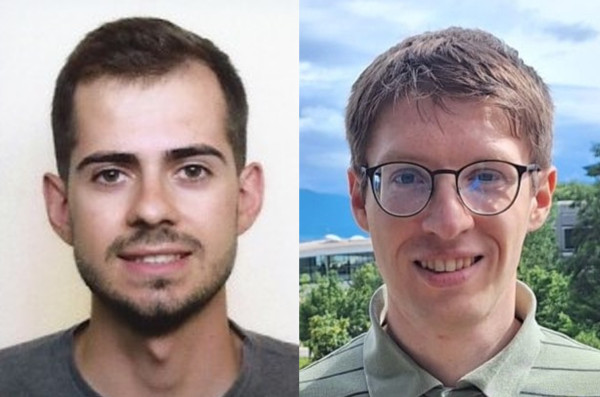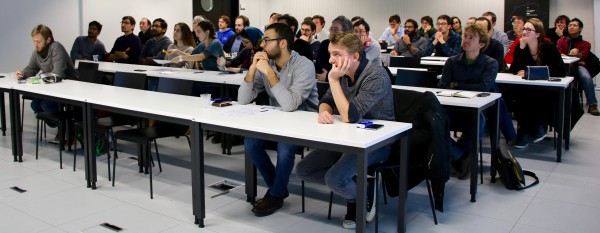MARVEL Junior Seminar — December 2024

Each seminar consists of two presentations of 25 minutes each, allowing to present on a scientific question in depth, followed by time for discussion. The discussion is facilitated and timed by the chair.
Pizzas will be served after the seminars in order to facilitate discussions based on the talks just presented.
Onsite participation
12:15 — Seminars take place in EPFL room Coviz2 (MED 2 1124)
~13:15 — Pizzas will be served in the MED building atrium, second floor
Online participation
Starting at 12:15:
https://epfl.zoom.us/j/68368776745
Password: 1923

Abstracts
Talk 1 — Oxide-induced mobility degradation in WS₂: A first-principles investigation
Mauro Dossena
Integrated systems laboratory, ETHZ
Transition metal dichalcogenides (TMDCs) hold significant potential for nano-transistor applications due to their excellent intrinsic properties. However, their performance is highly sensitive to the surrounding dielectric environment, often resulting in experimental electron mobilities that are an order of magnitude lower than theoretical predictions. In this study, we investigate the WS₂-Al₂O₃ interface using first-principles modeling to understand how a disordered oxide layer degrades mobility. We attribute this degradation to modulations in the Hartree potential caused by the disorder, particularly when exposed undercoordinated aluminum atoms are present at the interface. To mitigate these effects and enhance mobility, we propose solutions such as encapsulating the TMDC with hBN or using a crystalline oxide layer. However, these approaches may introduce challenges, such as reduced gate control or increased fabrication complexity.
Talk 2 — Nonempirical hybrid functional based on metaGGA
Stefan Riemelmoser
Chair of atomic scale simulation (CSEA), EPFL
Semi-local density functionals such as PBE typically underestimate experimental band gaps by 50%. Hybrid functionals address this “band gap problem” by admixing a fraction of exact exchange to semi-local exchange. The optimal mixing parameter depends on the specific material and can be identified as the inverse dielectric constant [1]. Recently, we have show that dielectric constants obtained using the r2SCAN metaGGA functional [2] are significantly more accurate than dielectric constants obtained using PBE [3]. This can be understood through the improved treatment of electronic self-interaction within the metaGGA framework [4, 5]. Further, a dielectric-dependent hybrid functional based on r2SCAN can outperform the standard PBE based hybrid in terms of band gaps [3]. Particularly impressive improvements are obtained for narrow gap semiconductors such as Ge and InAs, where PBE wrongly predicts a metallic phase, but r2SCAN can open a gap.
[1] A. Alkauskas, P. Broqvist , and A. Pasquarello, Phys. Stat. Sol. (b), 248(4), 775-789 (2011).
[2] J. W. Furness, et al., J. Phys. Chem. Lett., 11(19), 8208-8215 (2016).
[3] S. Riemelmoser, and A. Pasquarello, (to be submitted).
[4] J. P. Perdew, et al. Proc. Nat. Acad. Sci., 114(11), 2801-2806 (2017).
[5] Y. Zhang, J. Furness, R. Zhang, Z. Wang, A. Zunger, and J. Sun, Phys. Rev. B, 102(4), 045112 (2020).
Check the list of the next MARVEL Junior Seminars here.
Low-volume newsletters, targeted to the scientific and industrial communities.
Subscribe to our newsletter